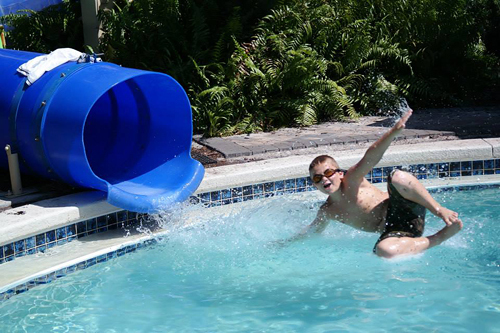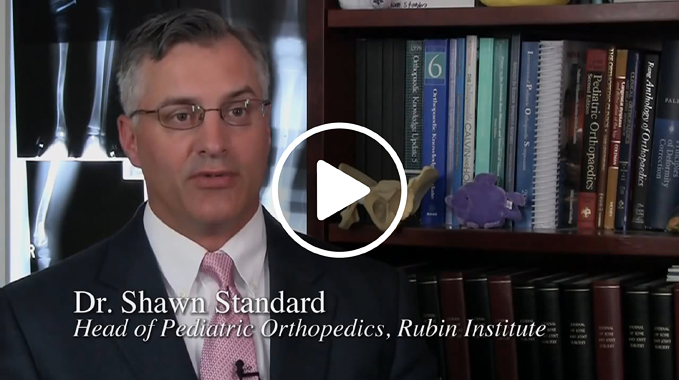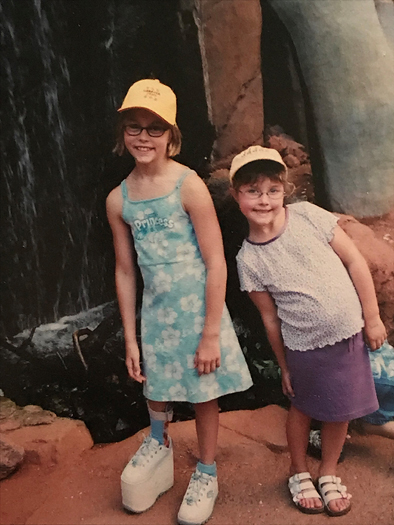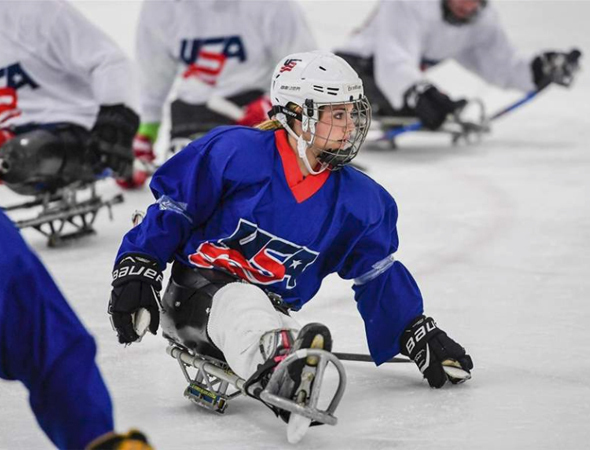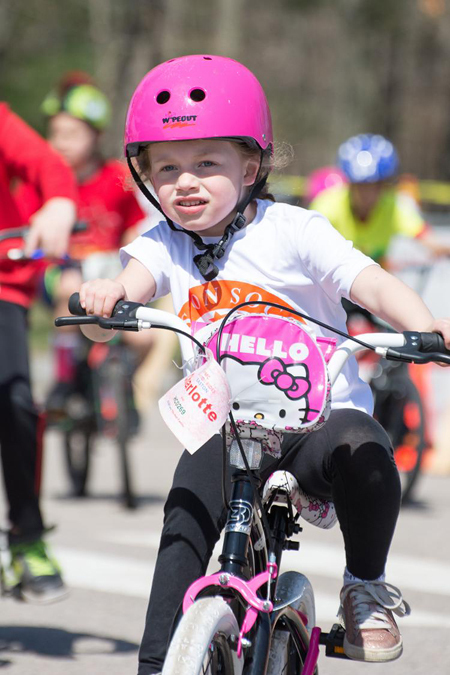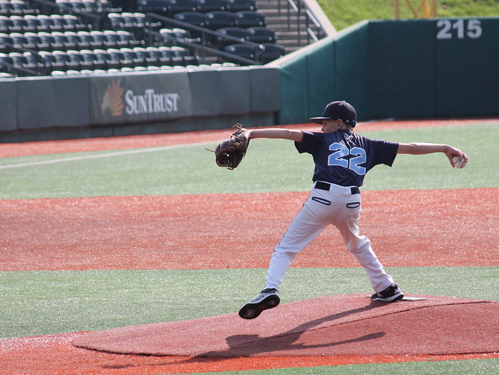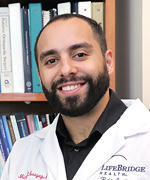Congenital Femoral Deficiency (CFD)
What is congenital femoral deficiency?
Congenital Femoral Deficiency (CFD) or Proximal Femoral Focal Deficiency (PFFD) are terms used to describe a birth defect of the femur (thigh bone). The “deficiency” portion of the term refers to under development of certain parts of the leg, resulting in a lack of stability, integrity and mobility at the hip and/or knee. The affected thigh is also shorter than the other leg and may be crooked as well. Both the deficiency and deformity can vary in degree and exist at birth, but do not get worse. Congenital femoral deficiency commonly appears with fibular hemimelia, a condition where the fibula (the smaller of the two shin bones) is short or absent, and the tibia is short as well.
One in 40,000-100,000 children is born with congenital femoral deficiency. It is rarely seen in siblings–even in identical twins. The cause is unknown (also called idiopathic). It is not transmitted, and parents should rest assured that it does not occur from an incidental fall or from consumption of alcohol. Families need to understand that when a leg is congenitally (at birth) abnormal, it will not be cured, but it can be well managed. Even if the legs are lengthened to an equal length, there can still be affects due to the underlying hypoplasia (decreased size) of the muscles and weakness.
The severity of the condition is extremely variable; there are 14 different types in some classifications. To classify the severity of the condition, doctors look at the amount of leg length difference, the stability of the hip, knee and ankle joints, and associated joint contractures/stiffness.
How is congenital femoral deficiency treated?
The treatment plan depends on several factors:
- the severity of the child’s condition,
- what will benefit the patient both functionally and psychologically, and
- the expectations and desires of the family.
Two distinct pathways exist: lengthening reconstruction and prosthetic reconstruction (amputation). To determine if a patient will be best treated by a lengthening reconstruction or a prosthetic reconstruction, the doctor must carefully assess the integrity of the joints. Limb length discrepancy can be overcome with lengthening treatments and/or shoe lifts. The ultimate success is highly dependent on the integrity and function of the joints.
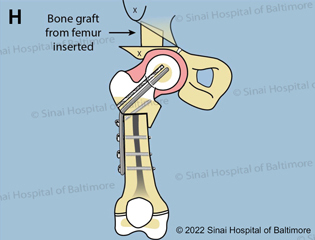 Click here to see illustrations of a SUPERhip reconstruction with a 130° blade plate for congenital femoral deficiency patients.
Click here to see illustrations of a SUPERhip reconstruction with a 130° blade plate for congenital femoral deficiency patients.If the presence of a hip joint is questionable, at three to six months of age, the doctor may choose to do an exam under anesthesia with an arthrogram using dye injection to help highlight the joint in order to see if there is a reconstructable hip joint. If the patient has a true hip, but the femoral neck is deformed and not ossified (turned into bone), then the patient will require a comprehensive reconstruction of the hip that we call a SUPERhip. (SUPER is an acronym for Systematic Utilitarian Procedure for Extremity Reconstruction, and we do SUPERhip, SUPERankle and SUPERknee procedures at the International Center for Limb Lengthening.) This type of hip reconstruction is performed before any lengthening is planned.
Video: Fibular Hemimelia and Congenital Femoral Deficiency
There are four general treatment strategies for congenital femoral deficiency:
I. Limb Reconstruction and Lengthening
Most patients with mild to moderate congenital femoral deficiency/proximal femoral focal deficiency can be successfully treated with limb reconstruction and sequential limb lengthening. Initial treatment begins around the age of 18-24 months. This initial treatment consists of joint reconstruction for the hip and knee. The goal of this initial treatment is to correct any underlying bony and soft tissue problems and prepare the leg for future lengthening. Limb lengthening is performed periodically during the growing years and is usually completed by the end of skeletal growth (14 years for girls, and 16 years for boys.) The number and timing of limb lengthening procedures depends on the severity of the initial limb length discrepancy. To skip down to read more details about limb lengthening for congenital femoral deficiency, click here.
II: Prosthetic Lifts and Shoe Lifts
It should be noted that shoe lifts are also a treatment for limb length discrepancies, but many patient families find them unfashionable. The formula for determining the best height of the shoe lift is to subtract 1 centimeter (0.4 inches) from the actual limb length discrepancy. If they were to be exactly equal, it is actually harder to walk without stubbing a toe. A one centimeter difference does not make a difference in gait. It is fine for children to take their shoes off inside. It would take two to three decades of unequal limbs before a limb length discrepancy would cause hip, back or knee arthritis.
Once the child reaches a limb length difference of 2 inches (5 centimeters), lifts get difficult, and the patient may also need a brace for the ankle to allow comfortable and stable use of the lift. At this point, the family should consider a lengthening treatment. However, it is never an emergency to do a lengthening. Once there is an 8-10 centimeter (3-4 inch) discrepancy, the patient might need to use a prosthetic extension. If the child experiences problems with shoe lifts, then lengthening should be considered.
III: Prosthetic Reconstruction
Rotationplasty: The International Center for Limb Lengthening sometimes uses rotationplasty for the more severe forms of congenital femoral deficiency if there is no true hip joint and a very large limb length discrepancy. In this procedure, the lower leg and foot are rotated 180 degrees backwards, so the patient’s foot is positioned where the knee used to be, with the heel portion in front and the toes pointing backwards. Placing the ankle joint in the position of the knee creates a functional knee for the patient. The knee becomes the new “hip” and the ankle becomes the new “knee.” The patient’s foot then fits into a below-knee type prosthesis. The end result leaves the patient with greatly increased mobility compared to the more traditional above-the-knee amputation and prosthesis. Rotationplasty is only an option if there is a well-functioning ankle joint to begin with. If a patient has severe congenital femoral deficiency and fibular hemimelia, they might not be a good rotationplasty candidate since they are missing good joints.
Another alternative for patients with no true hip joint and a very large leg length discrepancy is to perform multiple lengthenings and then between the ages of 13-15, the doctor can perform a pelvic support osteotomy. This is a specialized type of hip reconstruction where a bone cut is made in the upper femur. This may be an option for children with severe grades of congenital femoral deficiency when amputation is not acceptable.
IV: Distal Amputation/Ablation
Amputation is not the most common form of treatment for congenital femoral deficiency at the International Center for Limb Lengthening, but it is an option for any type of congenital femoral deficiency, and it is chosen by some patient families. Amputations can be done below the knee or above the knee depending on the functionality of the knee. It is important to manage parent and child expectations. If it is determined that it is best for a child to get a prosthesis, the family needs to be prepared that the prosthetic will need to be changed each year as the child grows, and there will be residual limb and stump issues to care for.
What is the treatment strategy for limb reconstruction and limb lengthening?
Once our doctors determine that a child can be treated effectively through reconstruction and limb lengthening, our doctors work with the family to develop a life plan for the child.
- The first step is to correct deformities in order to have good working hip, knee and ankle joints. If a SUPERankle procedure is needed, it is normally done between the ages of one and two years. If needed, the SUPERhip and SUPERknee procedures are usually done during the same surgery between the ages of two and three years.
- The doctor uses the Multiplier App, created at the International Center for Limb Lengthening, to determine what the child’s expected leg length discrepancy will be at skeletal maturity (usually at the age of 16 years for boys and 14 years for girls). That will determine how many treatments are necessary to successfully address the limb length difference. If the anticipated height, based on the long leg, is predicted to be tall, then there is an option to shorten the longer limb (epiphysiodesis), to mitigate the amount of lengthening needed.
What is an example of a life plan?
For a child with about an 8 inch (20 cm) predicted limb length discrepancy, the most common plan would be:
- Ages 1-2 years: reconstruction surgeries for ankle, hip, and/or knee (if needed).
- Ages: 3-4 and a half years: First lengthening treatment to gain 2-3 inches (5-8 cm) femur lengthening and 2 inch (5 cm) tibia lengthening (all external fixators). Click here for more details of what is involved in a lengthening treatment with an external fixator.
- Ages 7-10: Second lengthening treatment to gain another 2-3 inches (5-8 cm) in the femur using our internal lengthening rod or external fixation depending on the size of the femur, and an external fixator on the tibia to gain 2-2.4 inches (5-6 cm). Click here for more details of what is involved in an internal lengthening rod treatment.
- Ages 14-16: Third lengthening treatment with internal femur lengthening to gain 2.4 inches (6 cm) and tibia internal or external lengthening (depending on skeletal maturity) for 0.8 inches (2 cm).
Our doctors have found that certain ages are better than others for lengthening. Two year olds are generally not good candidates due to the “terrible twos.” At ages five to six, we have found many children resist working in physical therapy. Seven year olds can vary, but by ages eight to nine, most children will start to want lengthening treatment. We encourage patients to use shoe lifts until they reach a good age for lengthening. Shoe lifts help maintain proper spinal and foot alignment and should be used for six hours per day. For sports, no shoe lifts are used, so the child can run safely without “turning” his or her ankle.
Many families are concerned about the child’s knee heights matching cosmetically. If the femur is lengthened too much, or the tibia is lengthened too little, the knee height will be thrown off. Knees can have a one inch (2.5 cm) difference in X-rays, but it still would not be able to be detected by eye. With a difference of two inches (5 cm), there would not be a notable gait difference, but the difference will be detectable by eye. Gait differences start when a child has a three inch (7.6 cm) knee height difference, which is rare.
Why choose the International Center for Limb Lengthening to treat congenital femoral deficiency?
Limb lengthening and deformity correction are complex processes. Our pediatric orthopedic team has extensive experience in limb lengthening and reconstruction and treating this specific condition. Your doctor at the International Center for Limb Lengthening will take the time to make sure you understand all the options and then will customize a treatment plan to meet your child’s specific needs.
The International Center for Limb Lengthening at the Rubin Institute for Advanced Orthopedics at Sinai Hospital was specifically designed for the complex treatment of limb deformities. The building has physician offices, six operating rooms specially designed for limb lengthening procedures, physical therapy gyms, a therapy pool and a gait lab all right on site at Sinai Hospital. An apartment-style housing facility, the Hackerman-Patz House, was built across the street from the hospital to accommodate families during treatment. The Baltimore Ronald McDonald House is also available for families to stay at while a child undergoes treatment, and it provides a shuttle service to the International Center for Limb Lengthening. Both housing options provide a supportive family atmosphere. We also have a large group of patient families who have children undergoing treatment for this condition that offer support through our International Center for Limb Lengthening (ICLL) Facebook Group, ICLL Families.
Our patients also benefit from our team-centered approach with world-renowned pediatric surgeons, specialized physician assistants, nurses and physical therapists, a child life specialist, and a nurse educator. We also have orthopedic technologists, X-ray technologists and full-time staff pediatricians in the pediatric inpatient unit. We help patients with congenital femoral deficiency achieve their best possible result.
Chat with a doctor about congenital femoral deficiency
Our doctors hold free monthly chats on various subjects, including congenital femoral deficiency. Click here for more information about our monthly chats.

